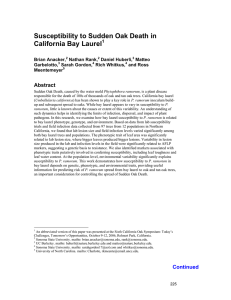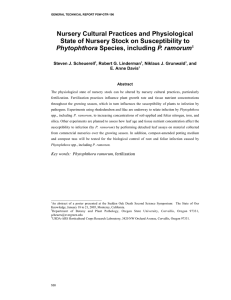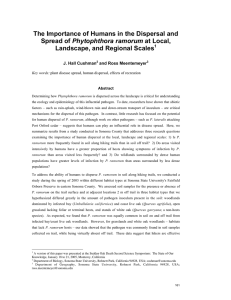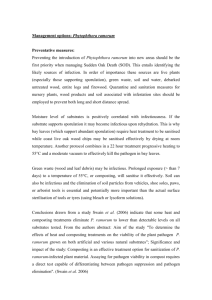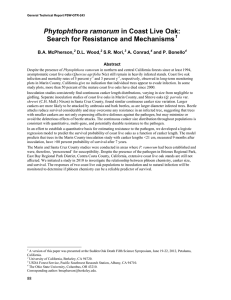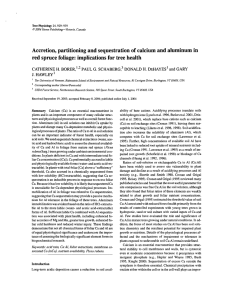Woodland Structure Affects Intensity of Infection by an Exotic Forest Pathogen
advertisement
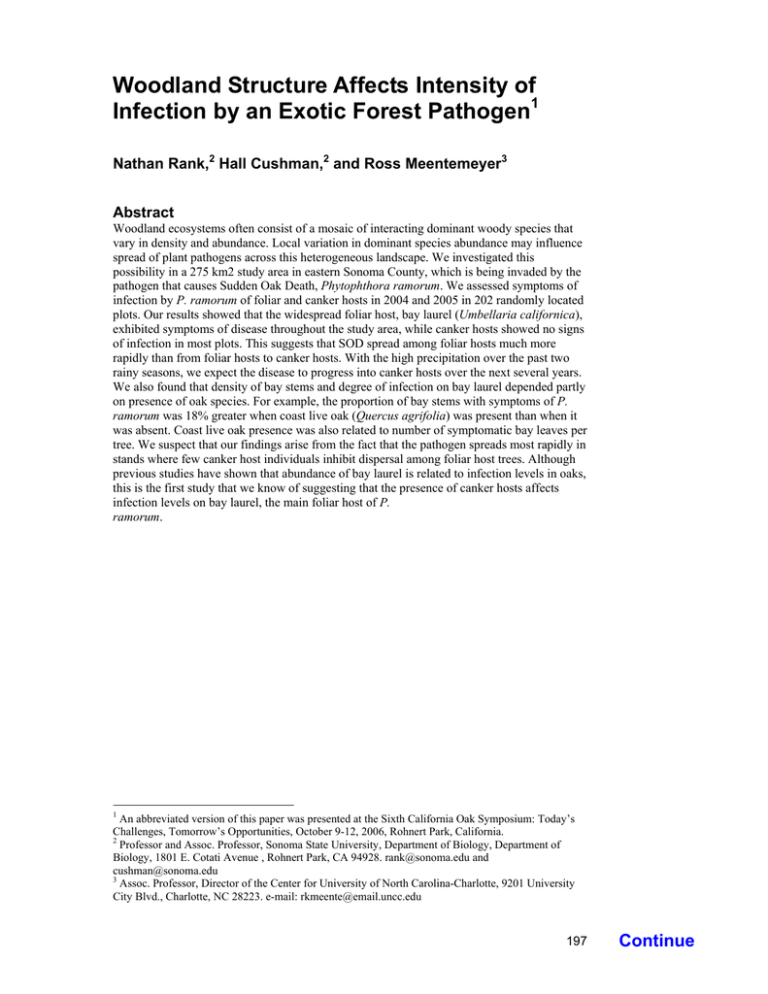
Woodland Structure Affects Intensity of Infection by an Exotic Forest Pathogen1 Nathan Rank,2 Hall Cushman,2 and Ross Meentemeyer3 Abstract Woodland ecosystems often consist of a mosaic of interacting dominant woody species that vary in density and abundance. Local variation in dominant species abundance may influence spread of plant pathogens across this heterogeneous landscape. We investigated this possibility in a 275 km2 study area in eastern Sonoma County, which is being invaded by the pathogen that causes Sudden Oak Death, Phytophthora ramorum. We assessed symptoms of infection by P. ramorum of foliar and canker hosts in 2004 and 2005 in 202 randomly located plots. Our results showed that the widespread foliar host, bay laurel (Umbellaria californica), exhibited symptoms of disease throughout the study area, while canker hosts showed no signs of infection in most plots. This suggests that SOD spread among foliar hosts much more rapidly than from foliar hosts to canker hosts. With the high precipitation over the past two rainy seasons, we expect the disease to progress into canker hosts over the next several years. We also found that density of bay stems and degree of infection on bay laurel depended partly on presence of oak species. For example, the proportion of bay stems with symptoms of P. ramorum was 18% greater when coast live oak (Quercus agrifolia) was present than when it was absent. Coast live oak presence was also related to number of symptomatic bay leaves per tree. We suspect that our findings arise from the fact that the pathogen spreads most rapidly in stands where few canker host individuals inhibit dispersal among foliar host trees. Although previous studies have shown that abundance of bay laurel is related to infection levels in oaks, this is the first study that we know of suggesting that the presence of canker hosts affects infection levels on bay laurel, the main foliar host of P. ramorum. 1 An abbreviated version of this paper was presented at the Sixth California Oak Symposium: Today’s Challenges, Tomorrow’s Opportunities, October 9-12, 2006, Rohnert Park, California. 2 Professor and Assoc. Professor, Sonoma State University, Department of Biology, Department of Biology, 1801 E. Cotati Avenue , Rohnert Park, CA 94928. rank@sonoma.edu and cushman@sonoma.edu 3 Assoc. Professor, Director of the Center for University of North Carolina-Charlotte, 9201 University City Blvd., Charlotte, NC 28223. e-mail: rkmeente@email.uncc.edu 197 Continue
